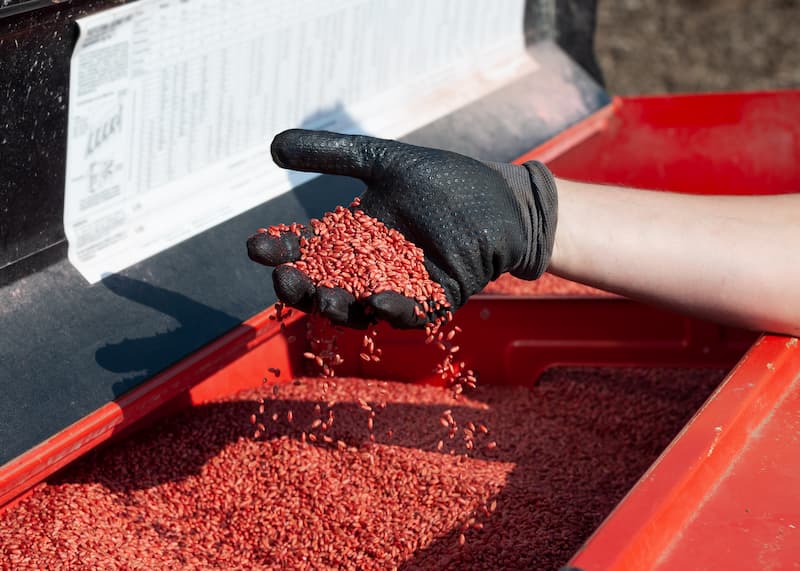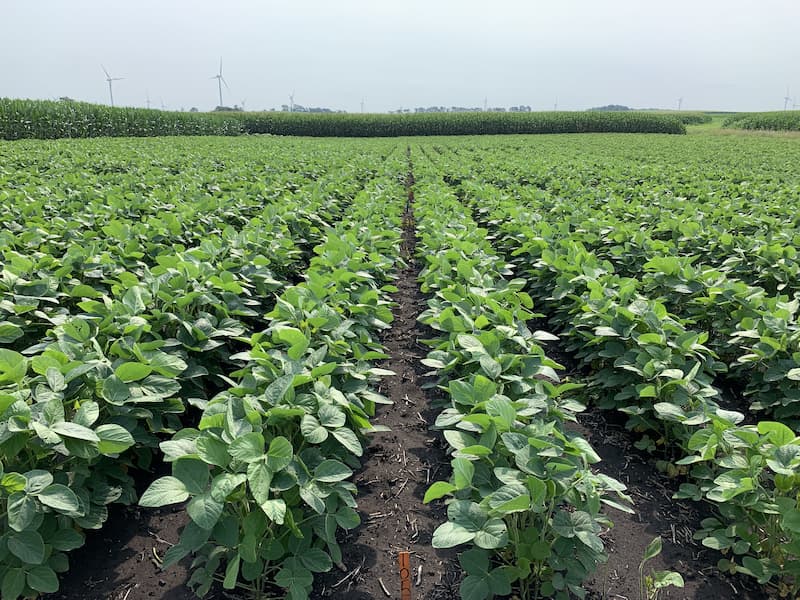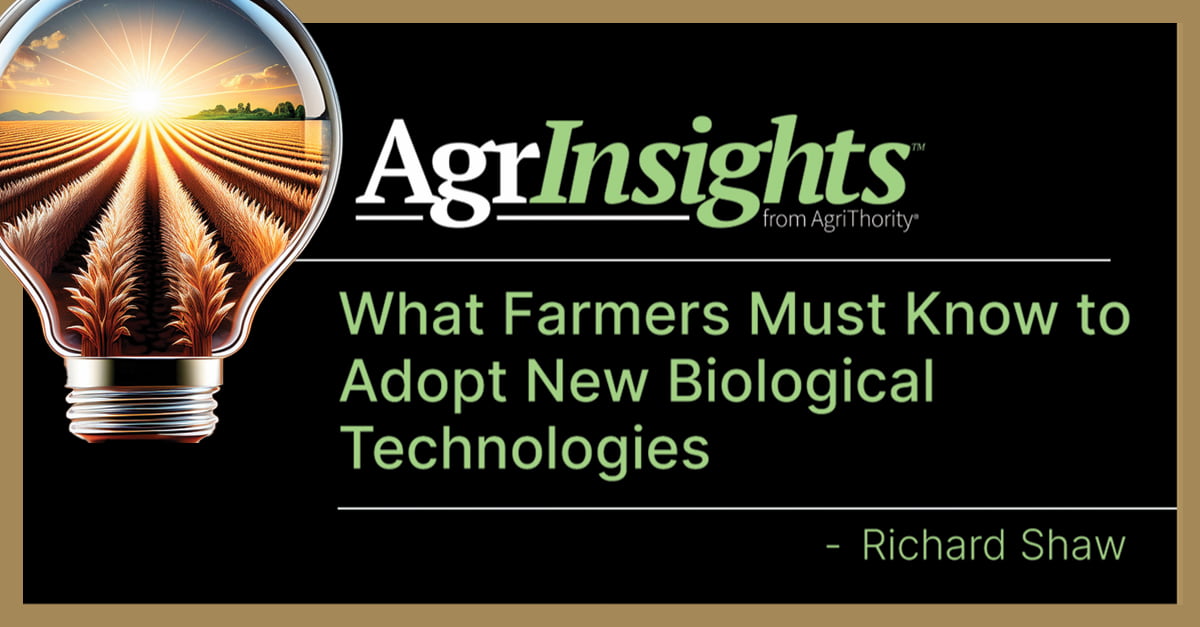Seed treatments have been around for centuries and are still growing and evolving. With an estimated CAGR of almost 10%, according to a ResearchAndMarkets Report, the seed treatment market is expected to reach more than $11.5 billion by 2029.
The drivers of this trend are continual advancements in technology, in equipment, and in the adoption of biological and biostimulant seed treatments. Despite chemical pesticide seed treatments currently accounting for a larger share of the market, the biological and biostimulant seed treatment segments are expected to significantly grow over the next seven years.
“Today’s seed treatment popularity is largely a result of improvements in treatment equipment, product performance and our understanding of the dynamics of pest management and crop performance,” says Richard Shaw, AgriThority Product Development Manager, who has worked with development of seed treatments throughout his lengthy career.
In today’s environment, governments also are encouraging the development of biological seed treatments, just as companies look to seed treatment as an effective way to implement the use of biologicals on farm. AgriThority® experts report more than one-third of the new technologies engaged in their development process over the past 10 years are tested for seed treatment potential.
Seed Treatment Trends
The focus on seed treatments is capitalizing on scientific advancements in several areas. Micronutrients and amino acids have become more prominent in the past few years and present an opportunity as seed treatments because they can be applied at low application rates.
New technologies are continually introduced such as microalgae-based seed treatment coating. As pressure to be more environmentally conscious rises, innovative seed treatment coating has some upside. As these innovations are developed around the world, many are being introduced into the U.S. markets for a wide variety of crops, reports Tony Pardo, AgriThority Global Director Client Services. One example is the relatively new category of bioinoculants.
Advantages to Developing a Seed Treatment

Research has established that a lot of crop protection or enhancement inputs provide their greatest benefits during the early stages of crop germination and plant establishment. Many pest situations do their greatest damage during these first few weeks after planting and there is a greater appreciation today that control does not have to focus on season-long elimination of a pest. Good control for a few weeks may provide most of the benefit realized from many inputs. With production costs constantly increasing, growers are much more likely to focus on sufficient suppression of the pests to realize an economic return from the control as opposed to total control of the pests.
Also, seed treatment biostimulants may help overcome early season abiotic stress like cold temperatures or hard soils, thus generating a better plant condition at later crop stages. AgriThority trials have frequently shown special value of biological seed treatments under these initially challenging growing conditions.
“In certain regions/countries, due to logistics or economics, developing a seed treatment can be the safest approach to ensure introduction of a product across a significant area,” says Ignacio Colonna, AgriThority Global Director, Science and Technology. “In-furrow may be plainly absent in countries such as Argentina, and foliar may be too dependent on sprays of other products. Farmers may not be willing to run a foliar spray just to apply a new biostimulant, for example.”
The economics of a seed treatment also can be attractive. The amount of product needed for seed treatment is much lower than for in-furrow or foliar applications, especially for low density crops. The product mode of action can sometimes dictate the need to be a seed treatment, which can be discovered by thorough product development. In certain products, a close contact from emergence, or even before, is required for proper efficacy, such as elicitor products and certain biologicals.
Considerations for Seed Treatments
The opportunities on the horizon for seed treatments can be enticing and exciting for companies, but growth of the seed treatment market has limits, especially related to the surface area of a seed. Proper product development is essential in determining the appropriate application methods and pathway to commercialization, including the need for combinations or mixing of products.
Combining biological and chemical seed treatments on the seed adds complexity, and this increasing complexity in mixes has a few consequences:
- New technologies to be added onto the seed need to include low or very low usage rates to allow adding them to the existing base treatment package without increasing overall volume of product applied.
- Robust evaluation of the new product compatibility with multiple other chemical or biological products is especially important.
Price also can become an issue and needs to be considered up front as part of the planning process. The new technology needs strong field development support in the target regions to be marketed with a competitive price and an established distribution partner. The delivery system [equipment] for the seed treatment also needs to be well defined. Seed safety, product stability, and compatibility also are critical in the seed treatment development process. Additionally, it starts to be a question of opportunity cost. Consider what will be replaced with the new technology.
“Seeds are only so big, so adding a product often means replacing something else,” Pardo says. “This also adds complexity if a grower plans on-farm seed treatment.”

If more seed treatment goes on at the farm, more education is necessary for farmer adoption of these new seed treatment technologies. Only 65% of corn growers and 62% of soybean growers can name their seed treatment products, according to Pennsylvania State University and USDA scientists’ findings from the Agricultural Resource Management Survey for corn in 2016 and soybeans in 2018.
“In addition to more farmer education, companies may also need to provide support for the logistics involved with on-farm application of their products, at least at early stages of product introduction. In some geographies, the availability of high-quality technology for seed treatment close to a farm is quite limited” states Colonna.
When your new innovation is ready for development, turn to AgriThority® for the scientific business, market and product expertise that can make the difference between a great idea and a breakthrough. Our global footprint, combined with our deep understanding of market and producer dynamics, helps move your innovation from the laboratory to market.



